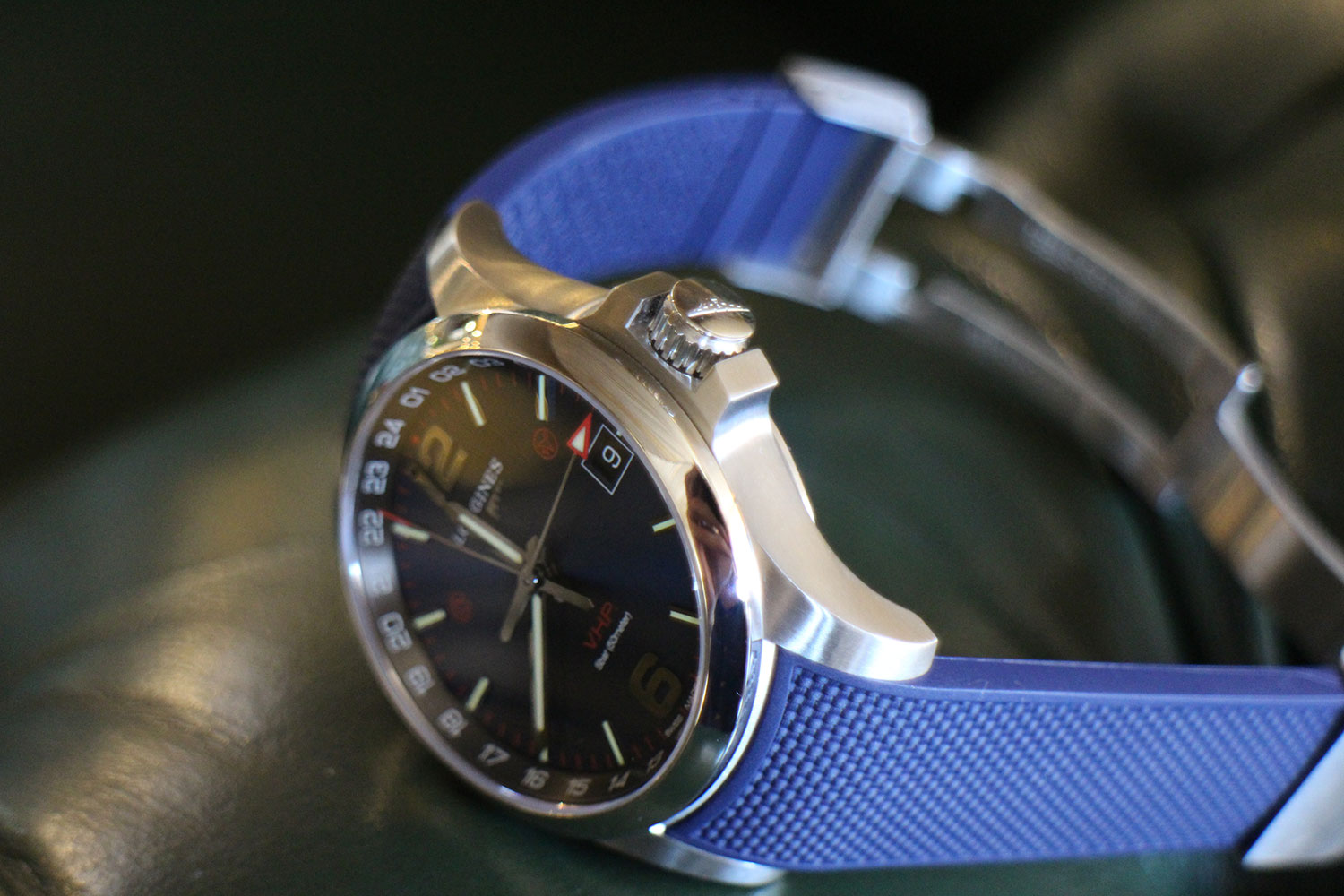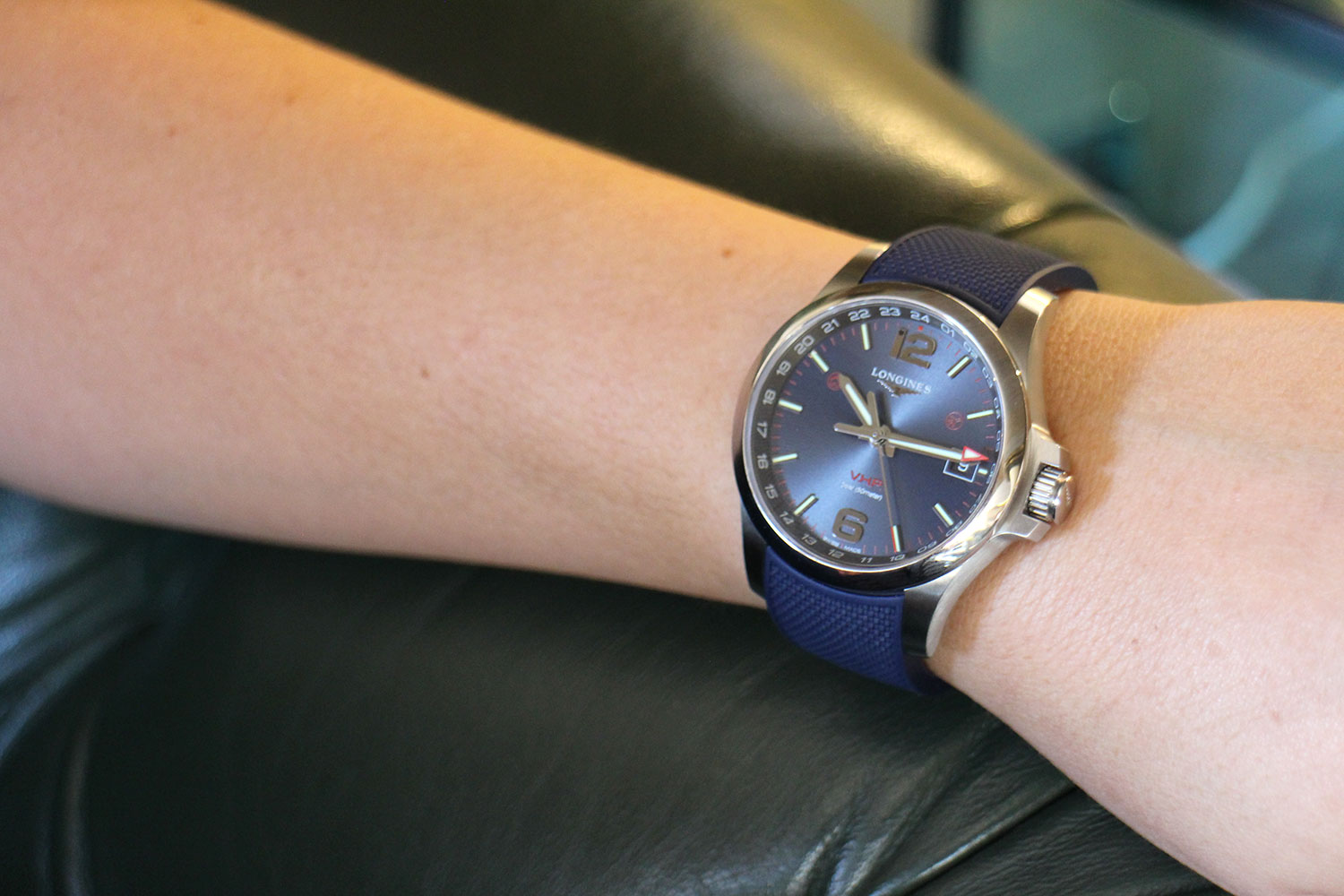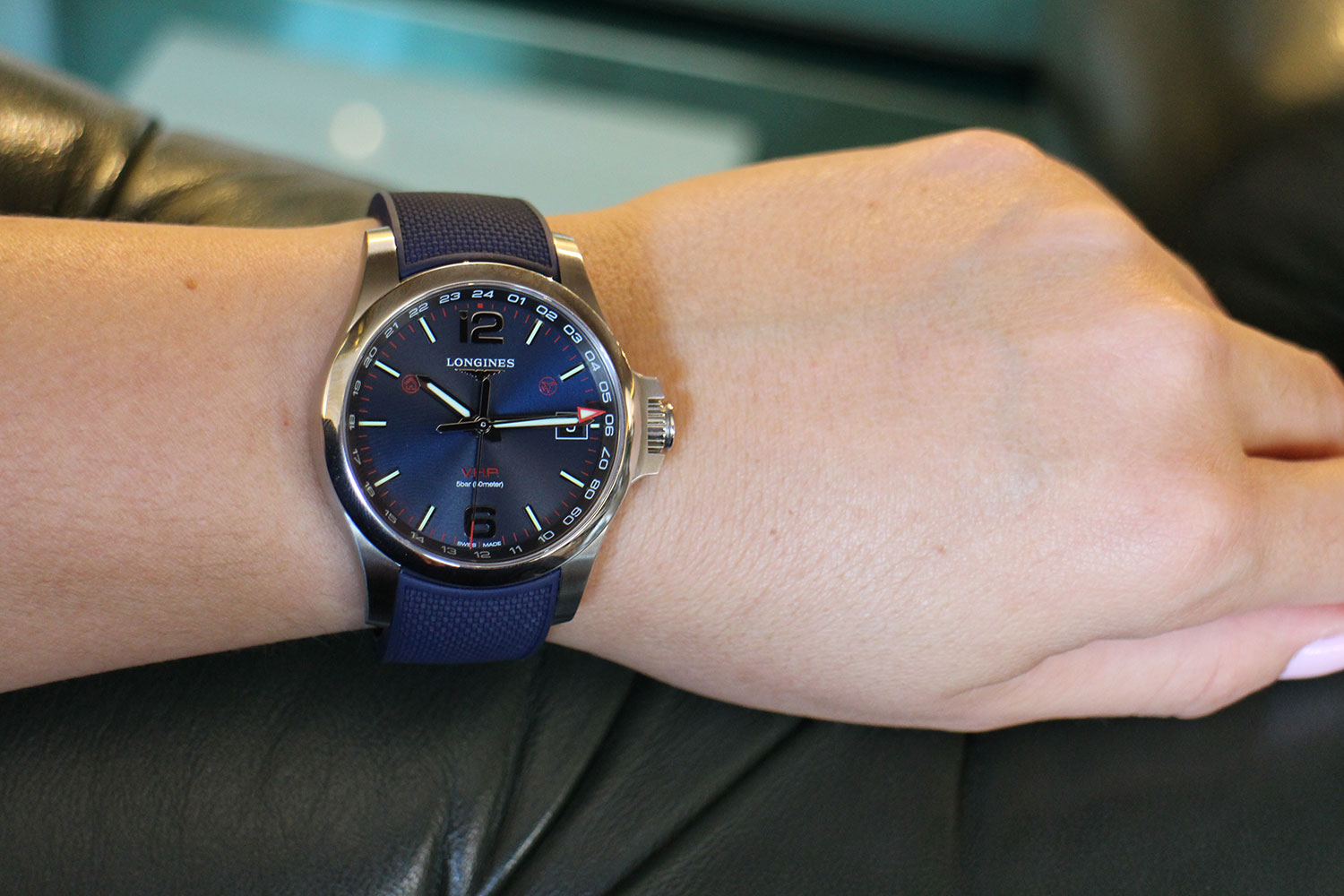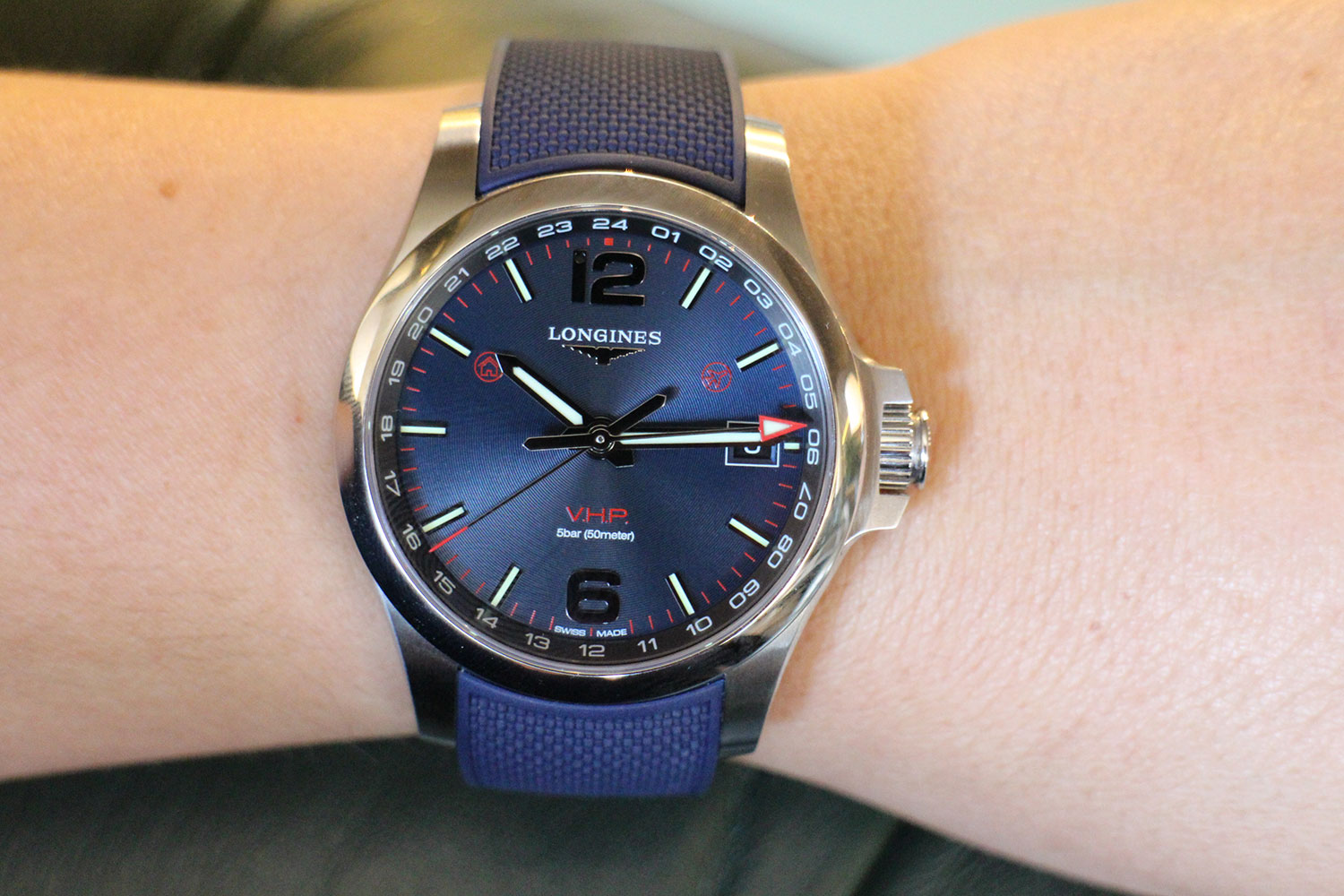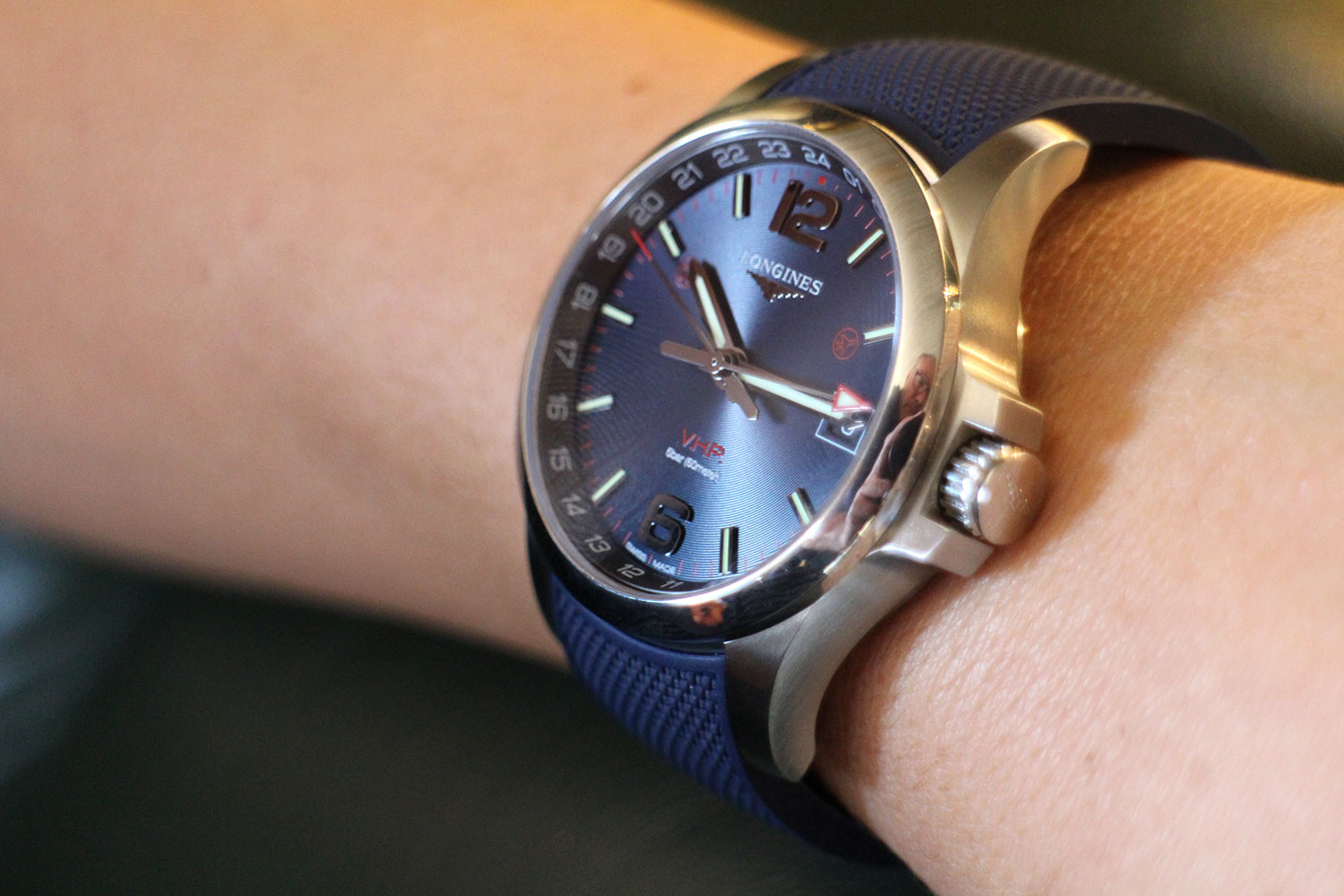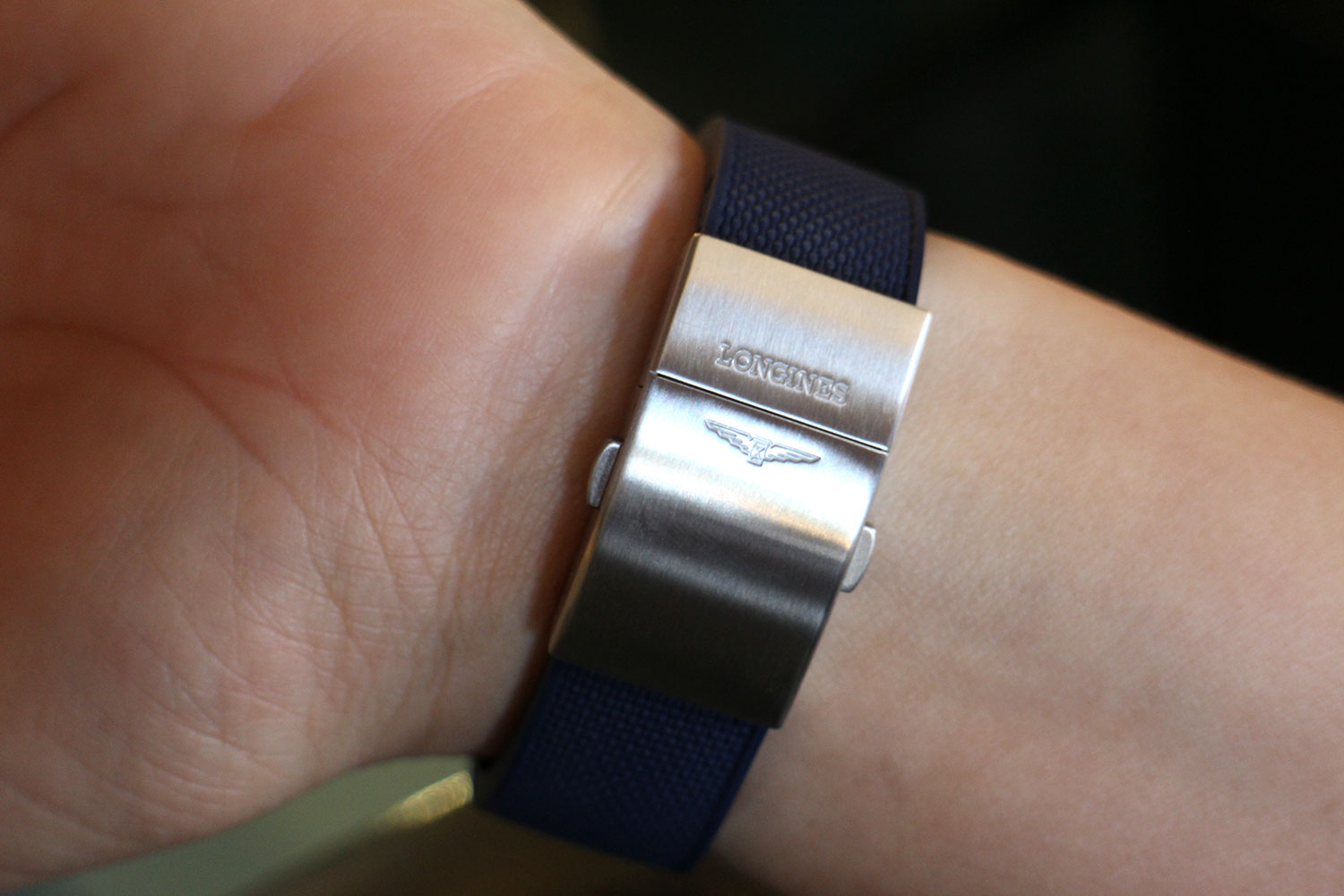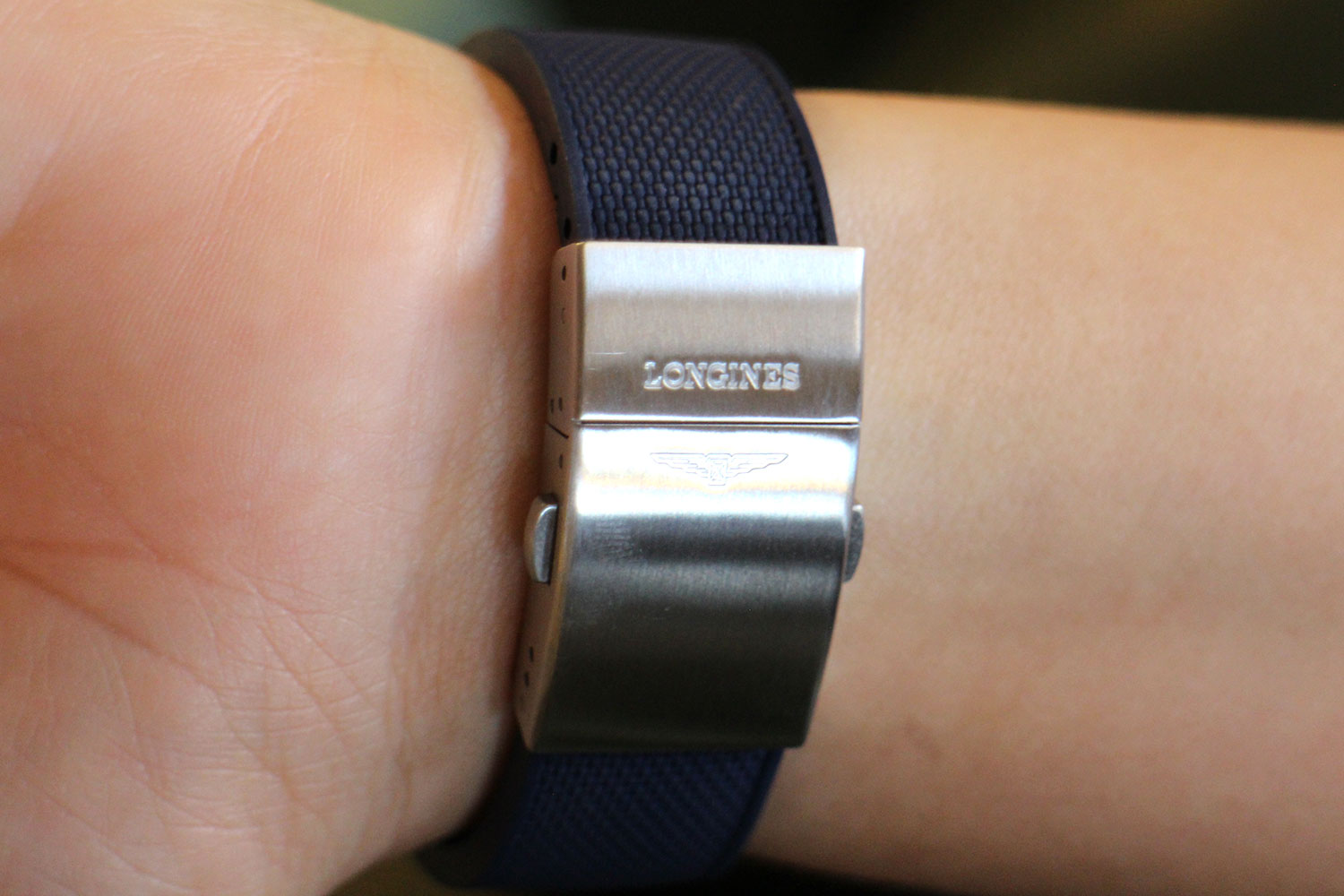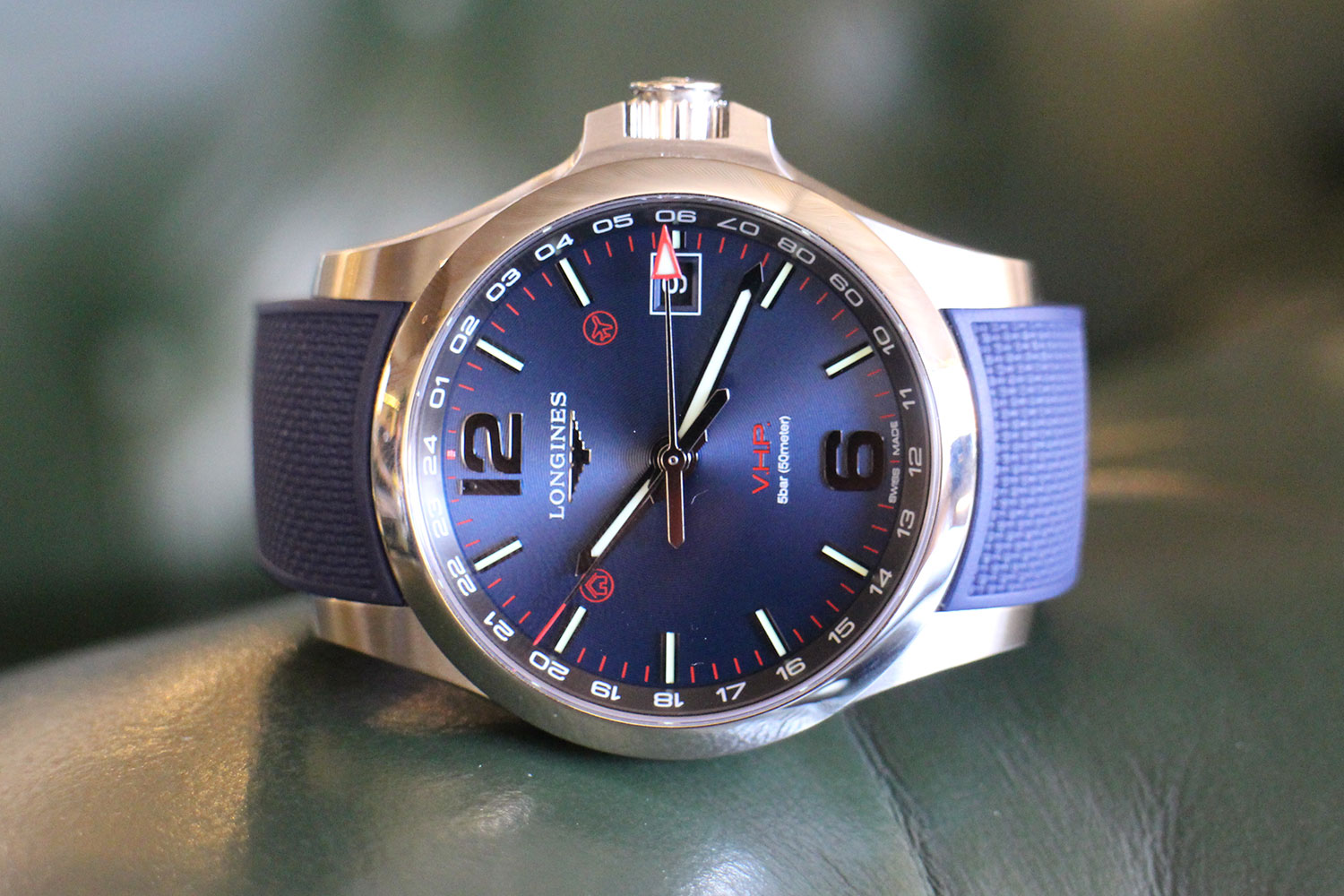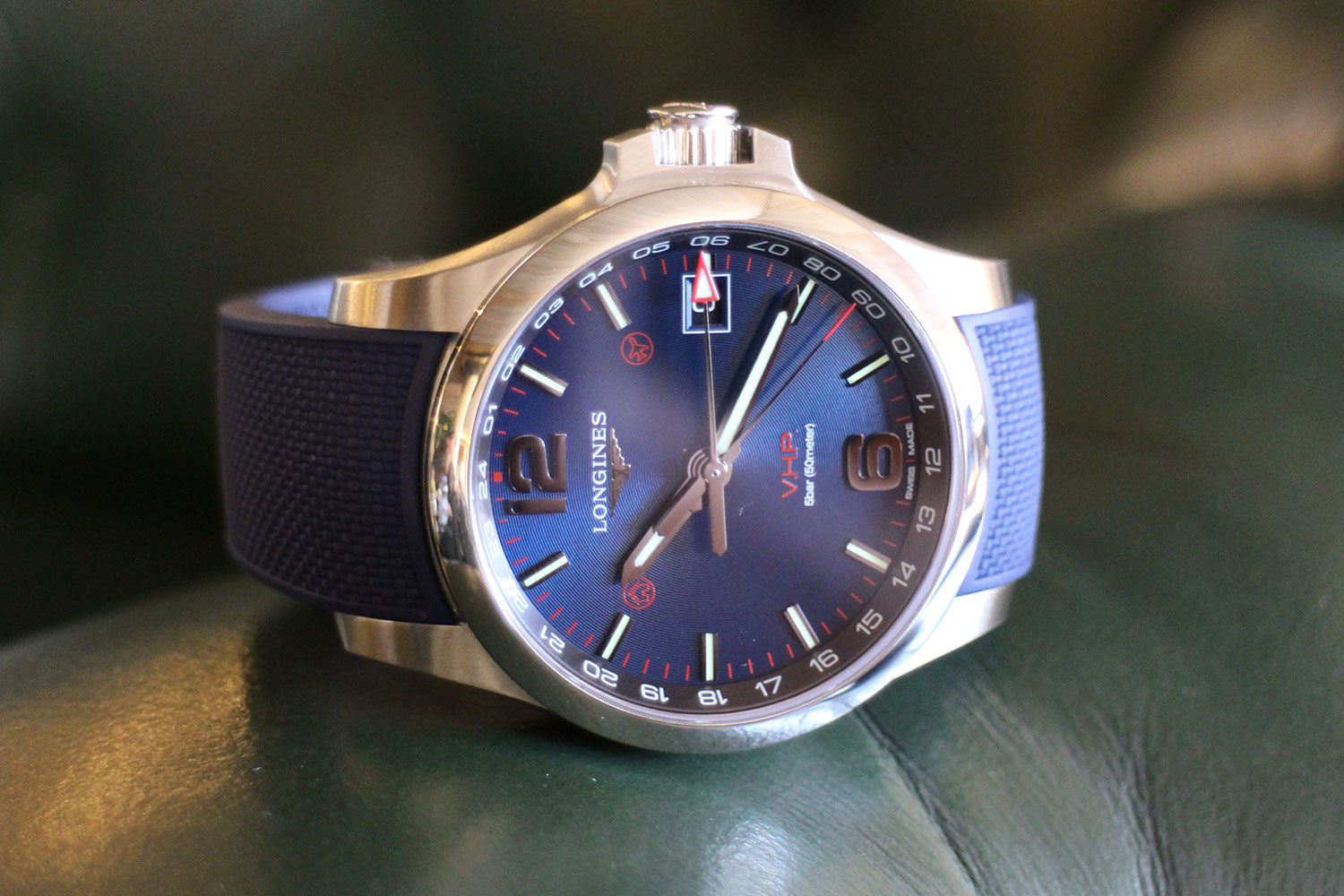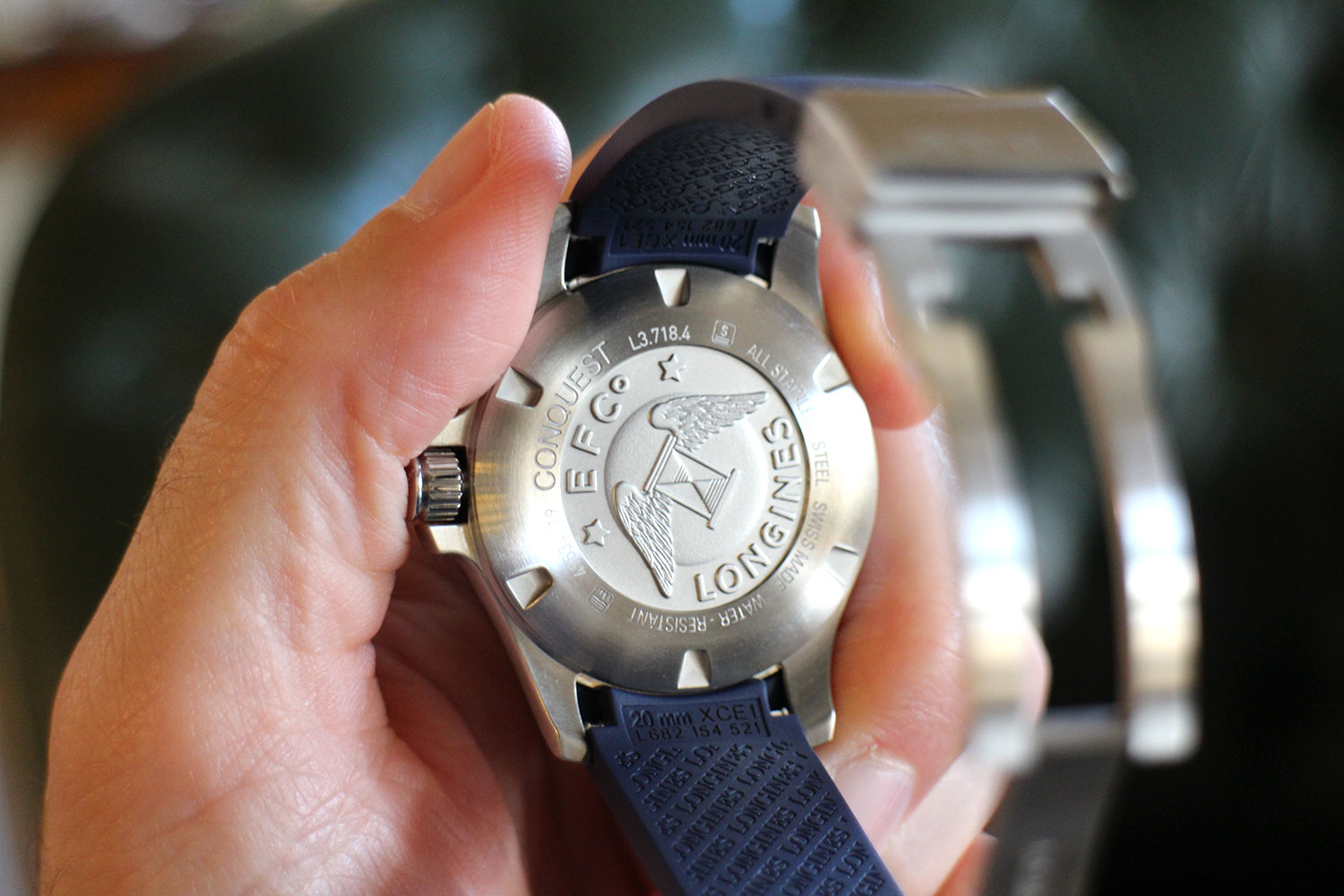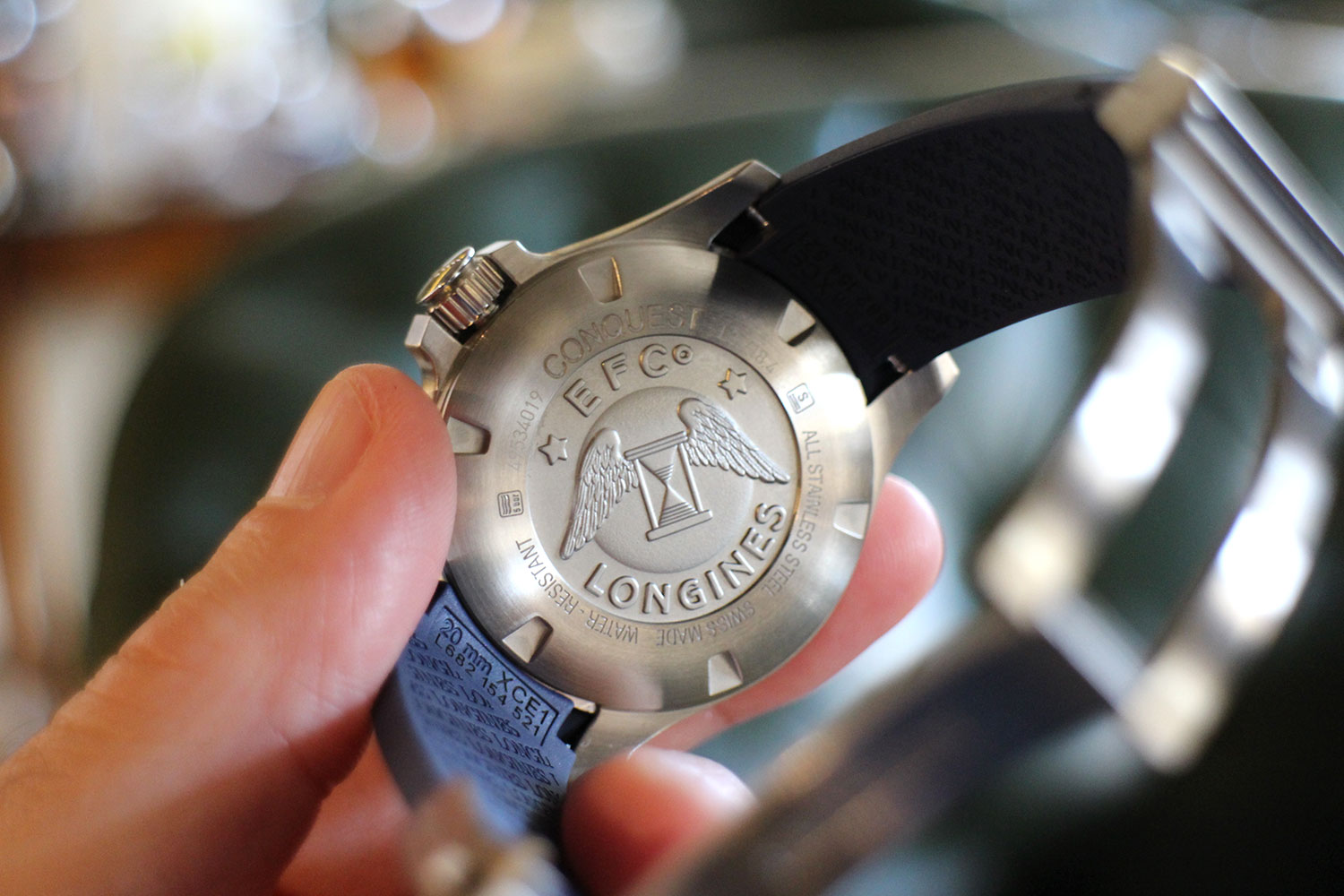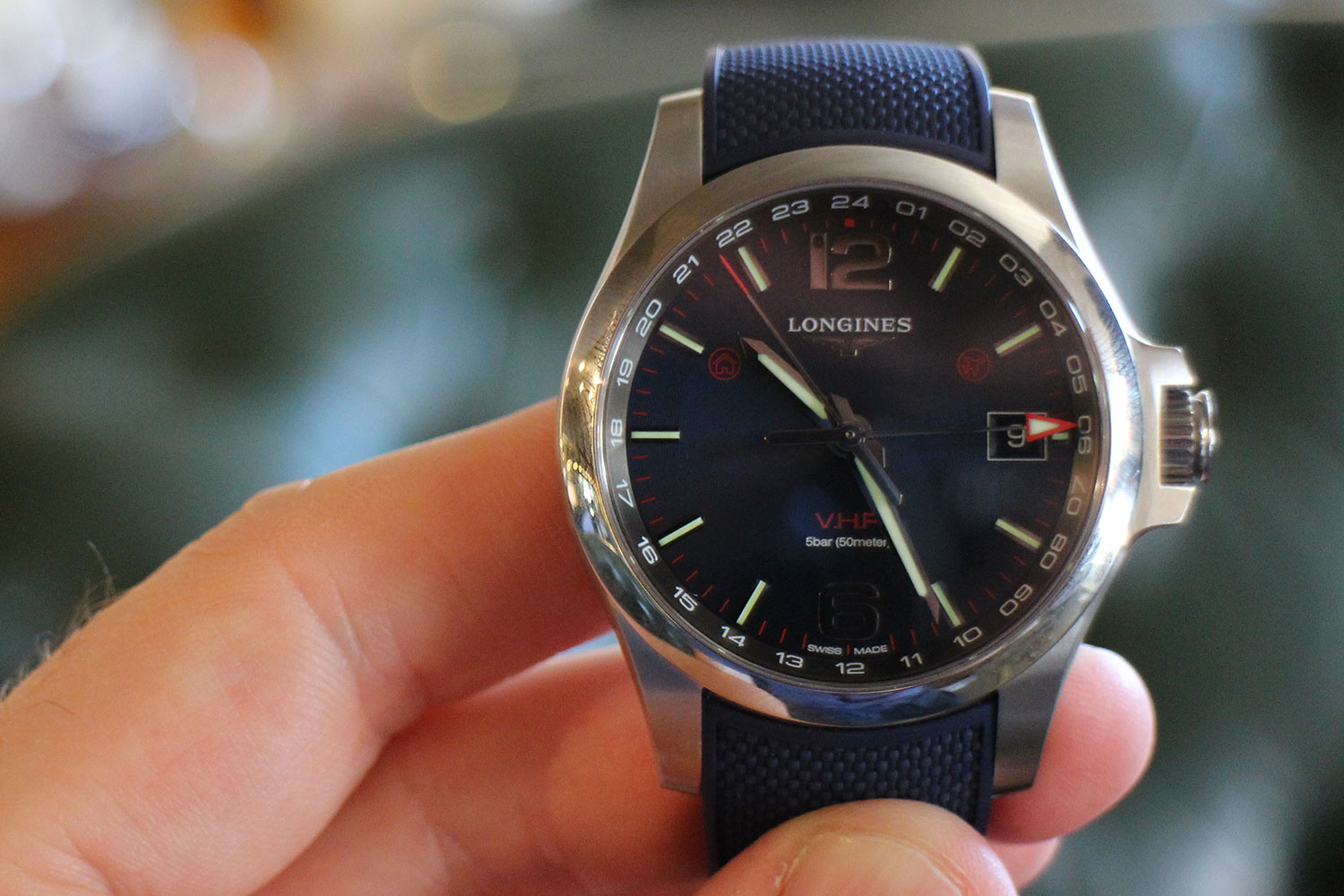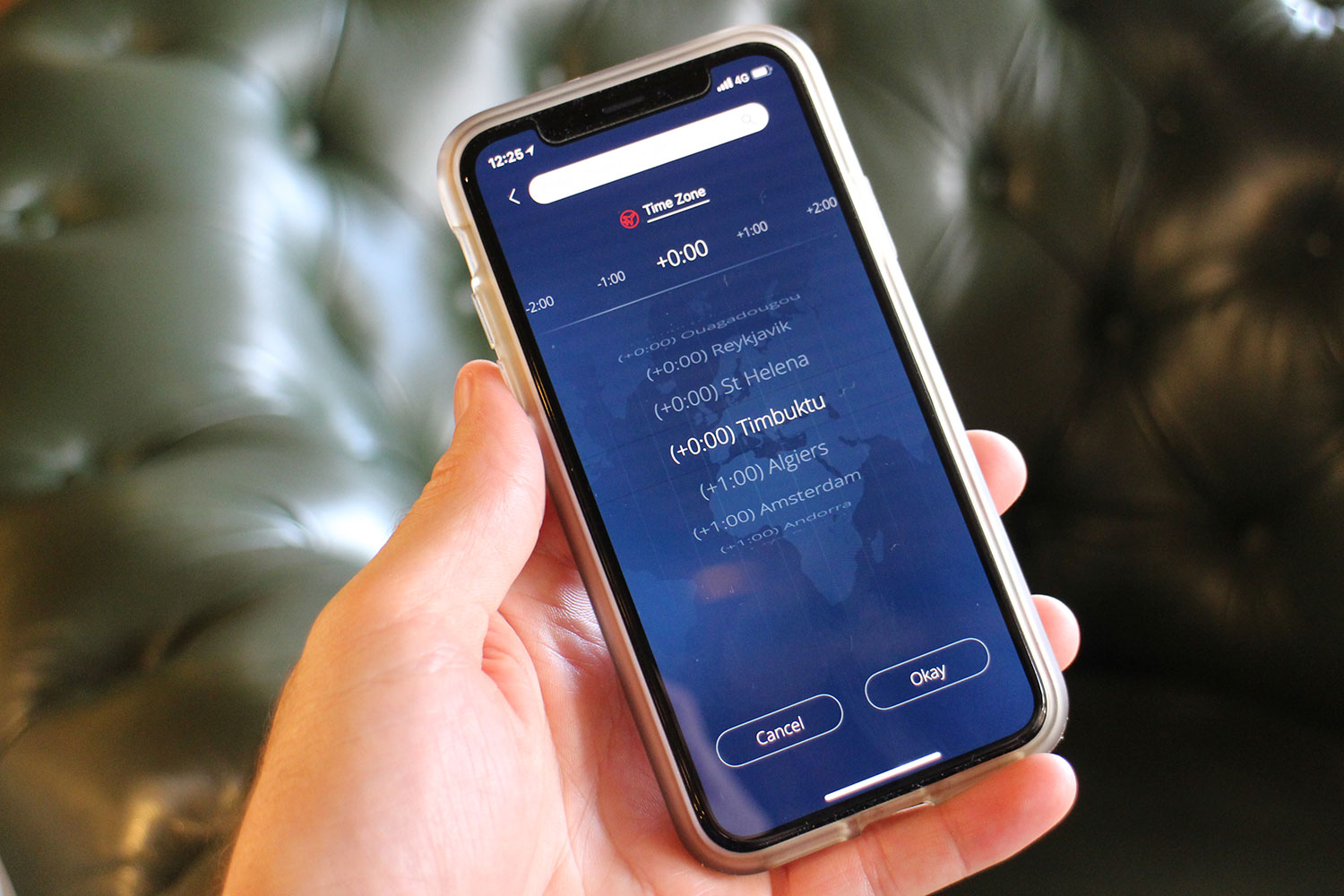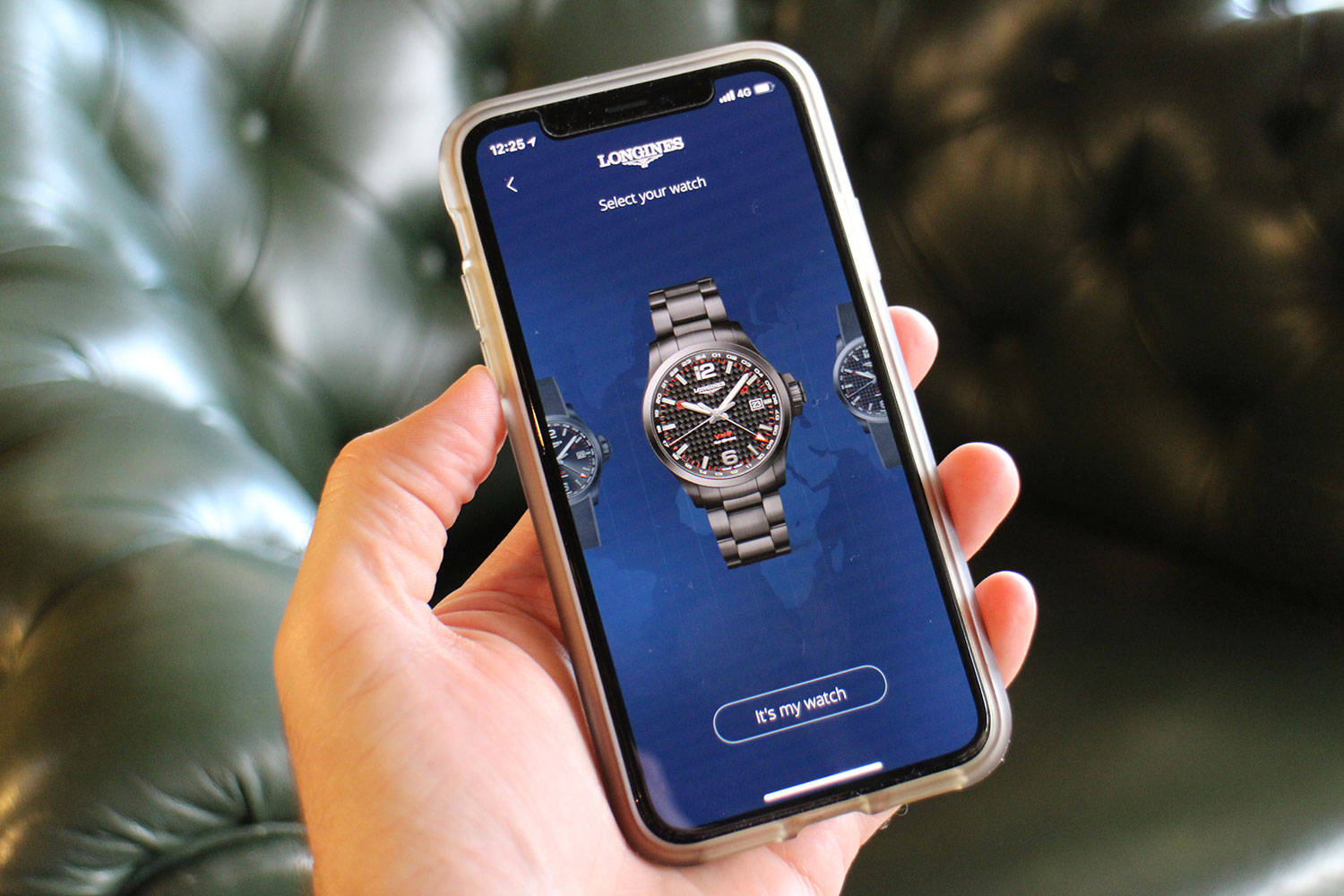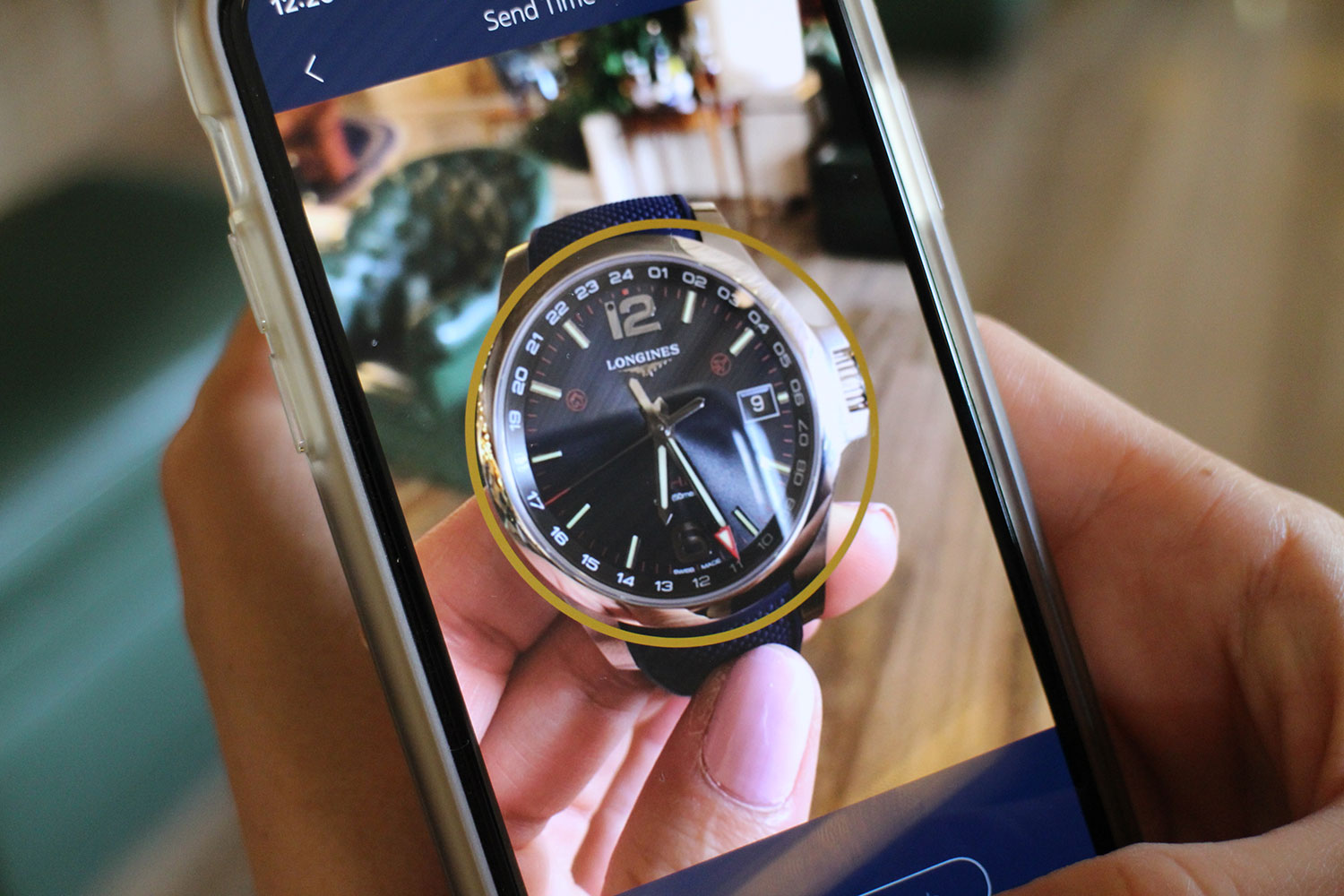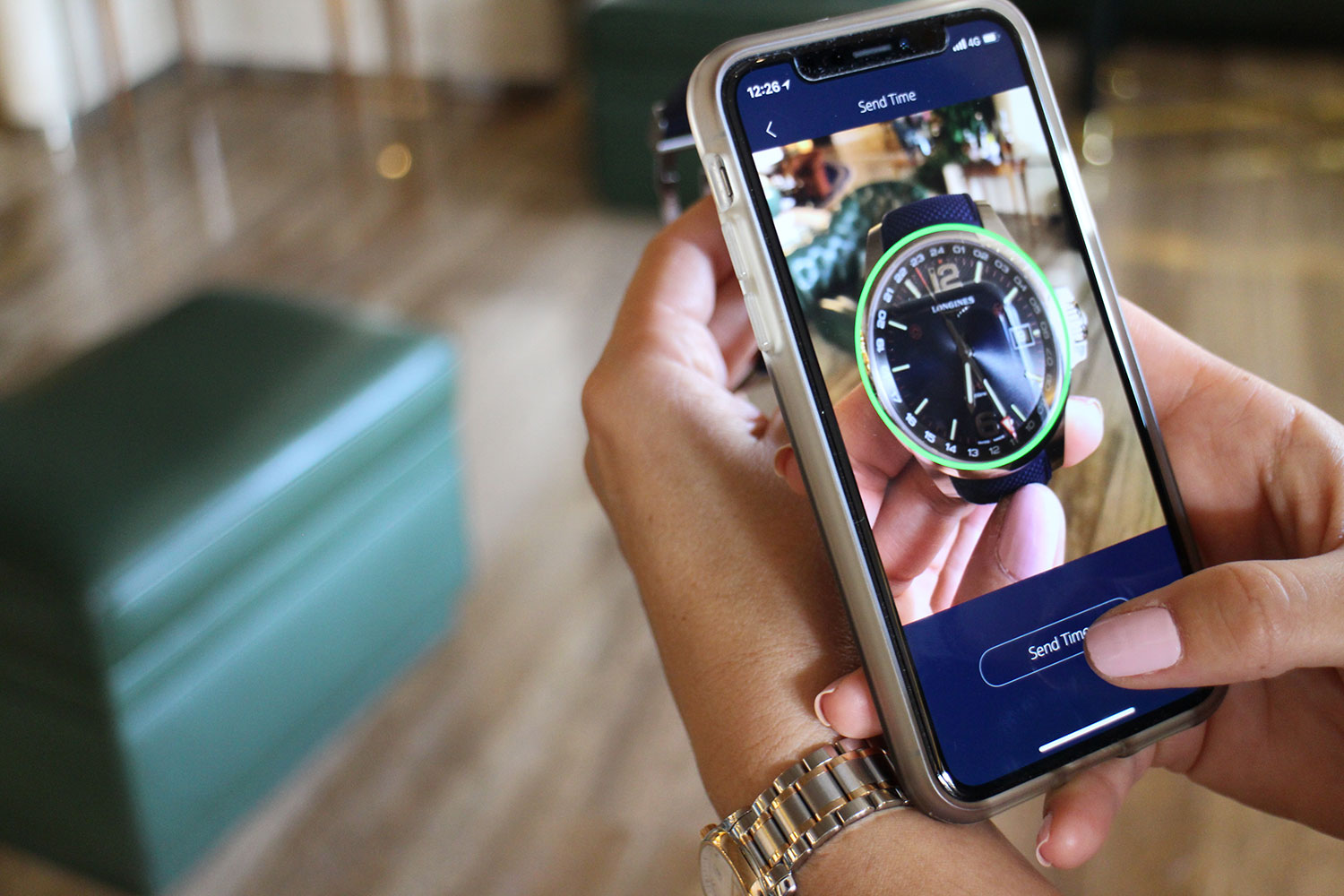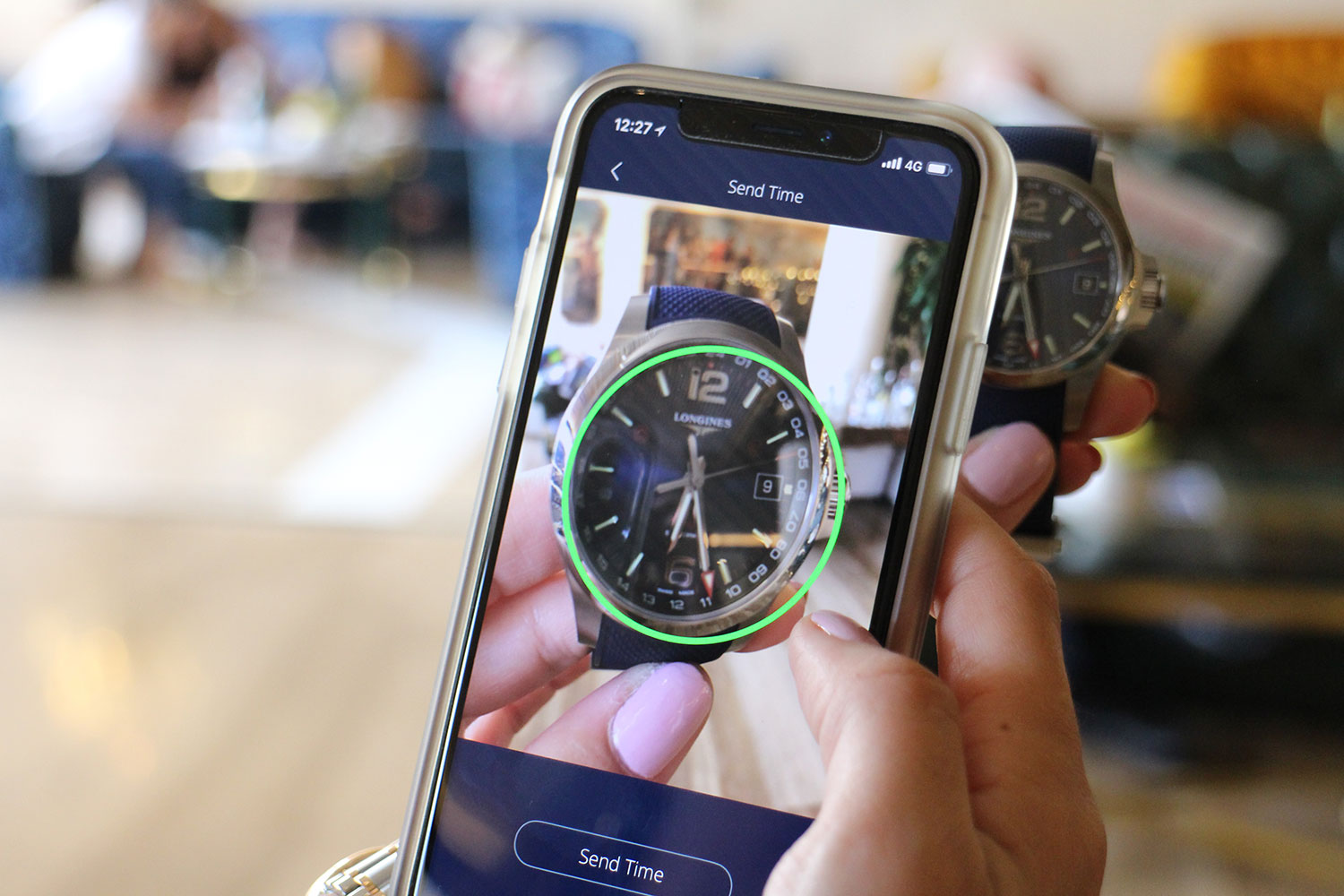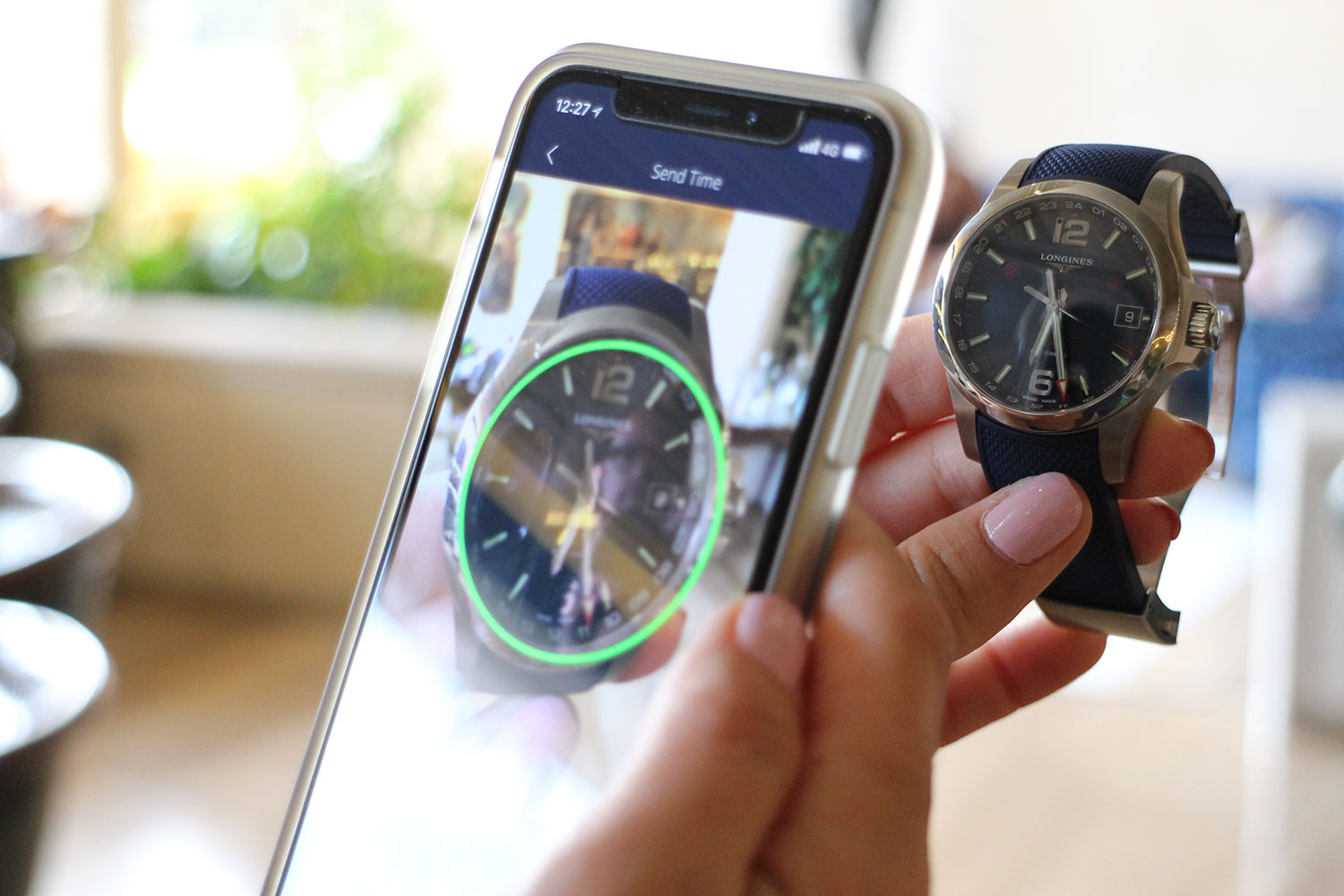Most smartwatches rely on Bluetooth, but it’s not the only way our phones can communicate with a wearable. Watchmaker Longines has proven this with the Conquest V.H.P. GMT Flash Setting — which uses the flash on your smartphone’s camera to transmit the data it needs. That’s right, just the flash. No Bluetooth, no Wi-Fi, and no messing around.
The Conquest V.H.P. GMT Flash Setting — a mouthful for sure — is not a smartwatch, and does not provide notifications, fitness tracking, or any other features we associate with connected watches. Instead it makes changing the world time zone not only simple, but manageable on a regular basis, and crucially for Longines, without disturbing the incredible accuracy of the watch.
Adjusting the time zone on a watch when traveling is usually done using the crown, but this often makes the watch potentially gain or lose seconds or minutes every time. This is unacceptable for Longines, especially since the V.H.P. name stands for Very High Precision. It’s well earned, as the watch will only gain or lose less than five seconds a year if left on its own. When you’re all fingers-and-thumbs changing the time using the crown, this astonishing accuracy will soon disappear.
Flash Setting
This is where Flash Setting comes in. Through a dedicated Longines app, you select your home time zone and a second time zone, and then prime the watch to receive a signal. The crown on the watch has a button incorporated — which actually feels very smartwatch-like — press and hold it down to activate the “pairing” mode. Tap the send time button in the app, and a camera viewfinder window appears where you line the watch up ready to receive the signal. It’s like pairing Snapchat’s Spectacles, or reading a QR code.
When correctly aligned, the flash unit blasts light into a tiny sensor hidden in the 1 of the number 12 at the top of the watch face. It takes only seconds. After confirming the change on the watch, the time changes accordingly. No fine tuning with the crown, and no loss of precious seconds. The crown’s button on the watch is used to change the time displayed, and the second hand can be told to point to the home or travel icon to clarify the time and your location match up — handy if there is only an hour’s difference, for example.
We tried it out with a selection of iPhone models, and were impressed with the speed and simplicity, but found it a little temperamental. It worked perfectly with several iPhone 7 and iPhone 8 models for example, but not with the iPhone X, a situation reported by other iPhone X owners at the launch event too. Speaking with ETA, the company that makes the movement inside the Conquest, mobile flashes sometimes have different frequencies, and they selected a “base” frequency at the low end of the spectrum to cover most phones. We understand testing all phones available would be practically impossible, but we were surprised a popular iPhone model didn’t operate correctly.
Not a smartwatch
The Conquest V.H.P. GMT Flash Setting is definitely not Longines’ response to the smartwatch. Longines CEO Walter von Känel has previously said the company will not make a smartwatch, and in an interview with Digital Trends and several other journalists he built on that comment, indicating it’s not because they’re bad products — although he was clearly no fan — but because of the manufacturing speed.

“We cannot do it, that’s it,” he said. “It’s a different market.”
Technology here helps Longines achieve its goals of not only making an incredibly precise watch, but also maintaining the appeal and emotional attachment that comes with owning a traditional Swiss watch. Von Känel shared his feelings on not making the Flash Setting the only way to adjust the time zone very clear, saying:
”When they came to me and said we will only have Flash Setting, I said forget it,” he said. “My generation has to do it by hand.”
He referred to the watch as having “a double approach,” as it provides the convenience of a basic smartphones connection, and “for the stubborn person who doesn’t want to be a slave to the iPhone, I can adjust it myself.”
Given how we already found the Flash Setting didn’t like our iPhone X, this is a shrewd decision. Flash Setting is also a feature von Känel himself will rarely use, as he doesn’t own a smartphone, preferring to use a very basic feature phone without a flash at all. This encapsulates Longines fascinating approach to the new Conquest watch — an understanding of how to properly leverage new technology in a non-intrusive way, without losing what makes a desirable Swiss watch, a desirable Swiss watch.
Exclusive movement
Compatibility issues aside, Flash Setting is very easy to use, unlike the majority of smartwatches. Even the underlying technology in making the tech work is relatively simple. A photo-detector sensor inside the watch face reads the flashes from the phone; but it’s not some proprietary light-based system — it’s basic binary, like Morse code. It’s also the only major change to the V.H.P. GMT movement that took movement maker ETA four years to develop, and debuted in 2017 in the first Conquest V.H.P. watch.

We took an in-depth look at the quartz movement earlier this year, but the highlights include an ability to autocorrect the time in the event of magnetism or shock forcing a tiny change, a built-in understanding of dates and times until the year 2399, and even an ability to hold and reset the time automatically when the battery needs to be changed after about four years. Precision, as you can tell, is everything.
Custom designed for Longines by ETA, it’s the beating heart inside the Conquest watch, and one of the primary reasons you’ll want one. ETA described it as a platform, suggesting further development, and it expects to build the photo-detector sensor into the movement itself in the future, reducing size and increasing versatility in design.
Good price, but a long time to wait
The Conquest V.H.P. GMT Flash Setting watch is good-looking and versatile, and we loved the way it looked and felt on our wrist — superbly weighted and balanced, with a striking design to catch the eye. It’s available with either a 41mm or 43mm case, making it suitable for most wrists, and in stainless steel or black PVD complemented by a black, carbon, white, or blue face.
You then have a choice of steel bracelets or rubber straps to match. We especially liked the stainless steel and blue combination seen in our pictures. It’s also reasonably priced for a Swiss watch with such a high level of technology, starting at $1,350 for the stainless steel model and $1,750 for the black PVD version.
CEO von Känel wasn’t exaggerating when he said Longines couldn’t compete with the manufacturing speed in the tech world. The Conquest V.H.P GMT Flash Setting watch will go on sale in 2019, giving Longines plenty of time to refine the device compatibility of Flash Setting, but a long time for those interested in buying one to wait.
